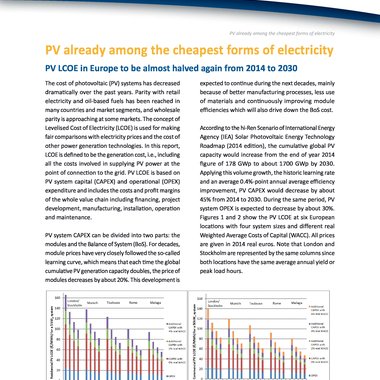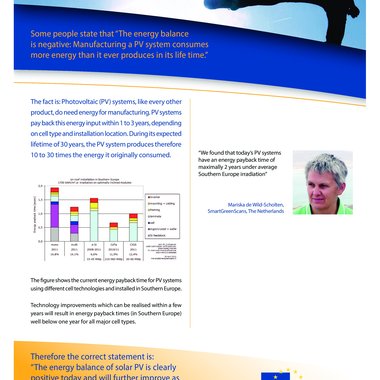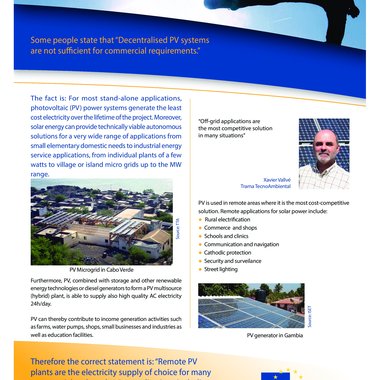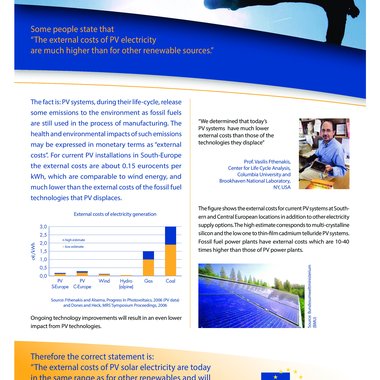
PV IS ALREADY AMONG THE CHEAPEST POWER TECHNOLOGIES
The cost of photovoltaic (PV) systems has decreased dramatically over the past years. Parity with retail electricity and oil-based fuels has been reached in many countries and market segments, and Wholesale parity is approaching at some markets. The concept of Levelised Cost of Electricity (LCOE) is used for making fair comparisons with electricity prices and the cost of other power generation technologies. In this report, LCOE is defined to be the generation cost, i.e., including all the costs involved in supplying PV power at the point of connection to the grid. PV LCOE is based on PV system Capital (CAPEX) and operational (OPEX) expenditure and includes the costs and profit margins ofthe whole value chain including financing, project development, manufacturing, installation, operation and maintenance.

What is Photovoltaics and its application?
Photovoltaic (PV) is a marriage of two words: “photo”, meaning light, and “voltaic” meaning electricity. Photovoltaic technologies are used to convert solar energy (light) into electricity.

Some people state that “The energy balance is negative: Manufacturing a PV system consumes more energy than it ever produces in its life time.”
The fact is: Photovoltaic (PV) systems, like every other product, do need energy for manufacturing. PV systems pay back this energy input within 1 to 3 years, depending on cell type and installation location. During its expected lifetime of 30 years, the PV system produces therefore 10 to 30 times the energy it originally consumed.

Some people state that “Decentralised PV systems are not sufficient for commercial requirements.”
The fact is: For most stand-alone applications, photovoltaic (PV) power systems generate the least cost electricity over the lifetime of the project. Moreover, solar energy can provide technically viable autonomous solutions for a very wide range of applications from small elementary domestic needs to industrial energy service applications, from individual plants of a few watts to village or island micro grids up to the MW range.

Some people state that “The external costs of PV electricity are much higher than for other renewable sources.”
The fact is: PV systems, during their life-cycle, release some emissions to the environment as fossil fuels are still used in the process of manufacturing. The health and environmental impacts of such emissions may be expressed in monetary terms as “external costs”. For current PV installations in South-Europe the external costs are about 0.15 eurocents per kWh, which are comparable to wind energy, and much lower than the external costs of the fossil fuel technologies that PV displaces.